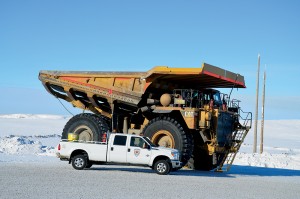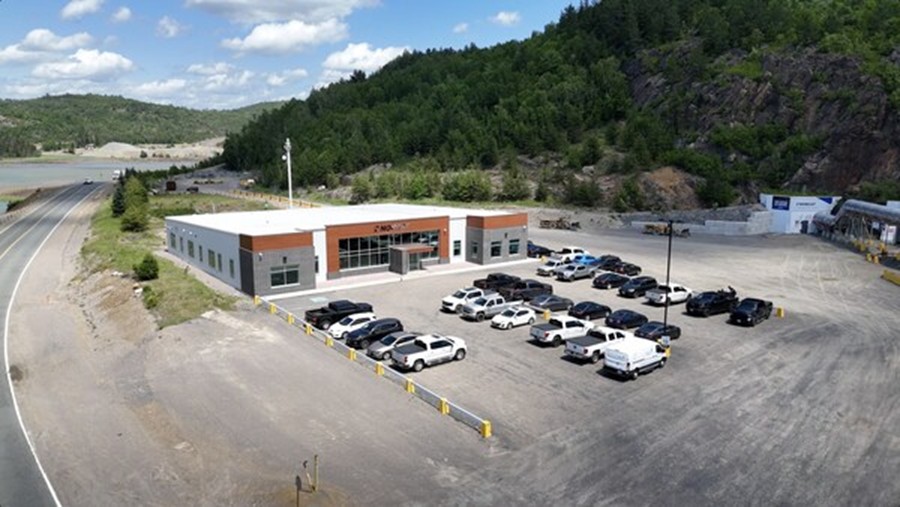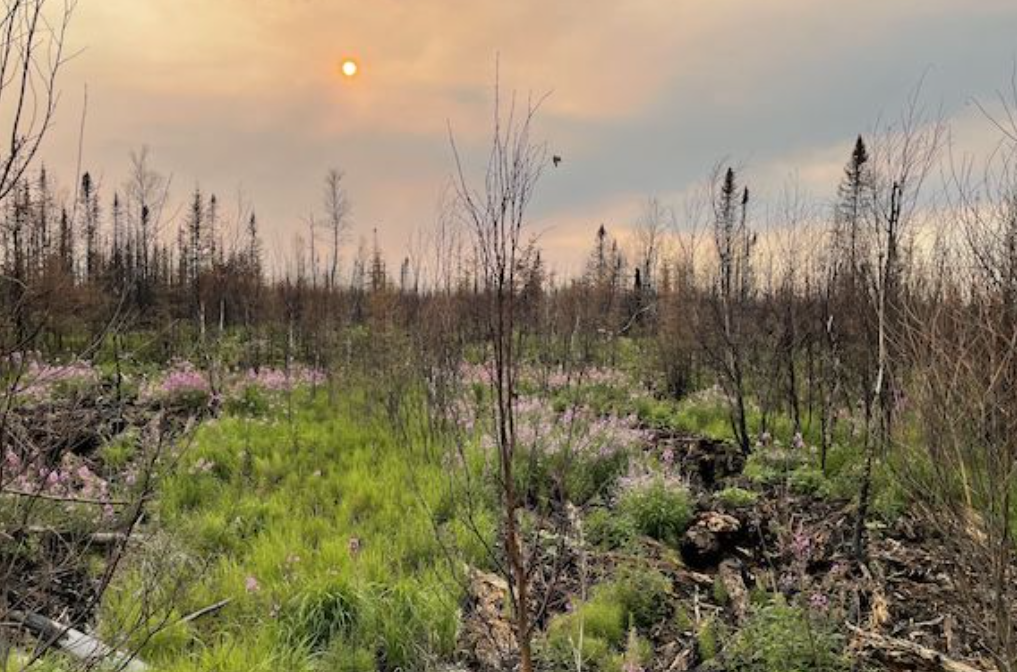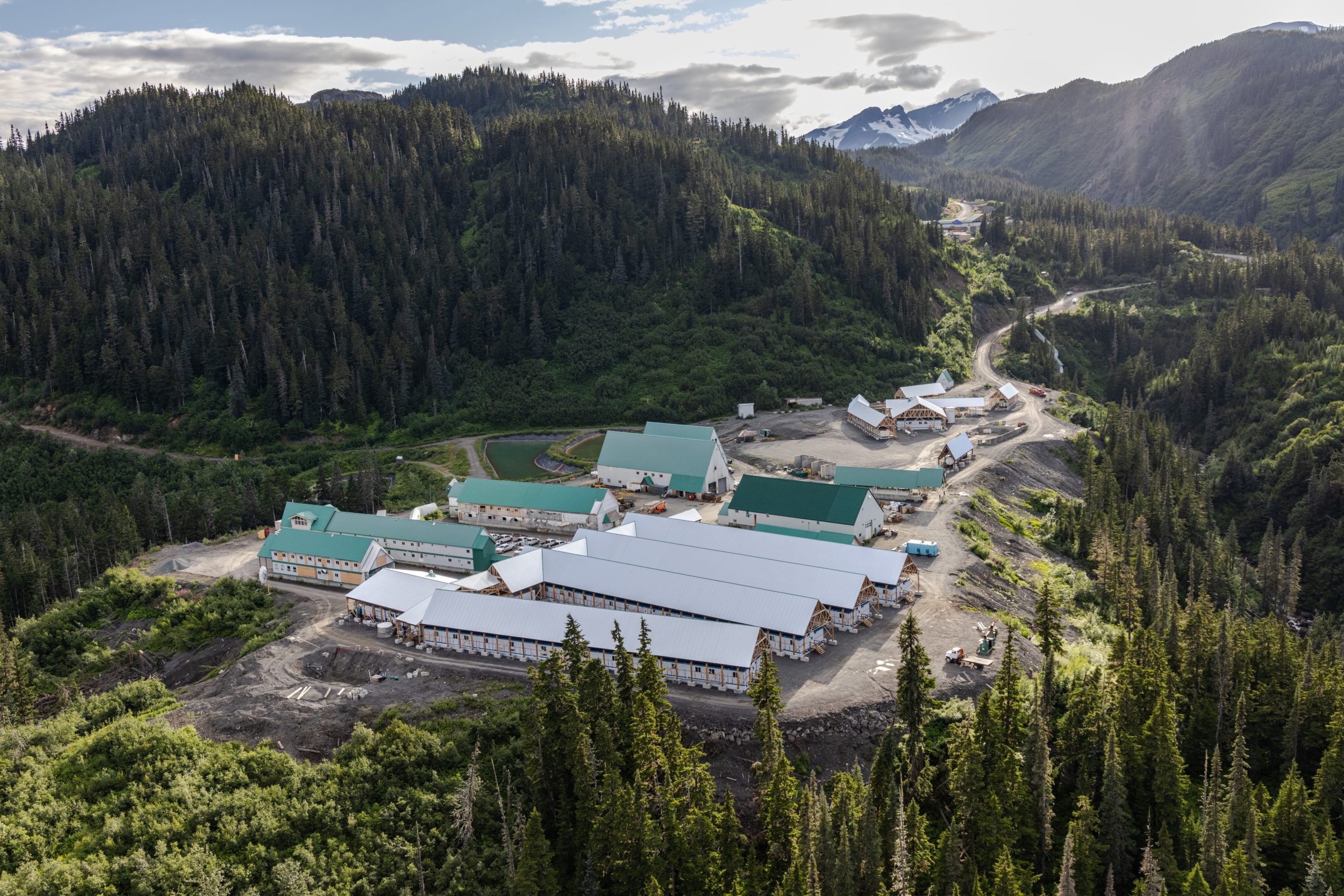Patrolling the ice road in the frozen North is a ‘safety first’ occupation
Does living and working on Canada’s Ice Highway appeal to everyone? The obvious answer is “NO,” because the word “ice” is in its name. And, as many people in Canada would probably agree, that’s something they could easily live without.

The Aurora Borealis.
But for the men and women who work at Scarlet Security Ltd in Yellowknife, Canada’s world-renowned winter road has been providing steady security work for the company on the ice road project for many years.
Every year from late January until March 31, Scarlet Security’s 40-person team (consisting of retired Police Officers who come from across Canada with backgrounds in traffic enforcement and investigations) help ensure that mine sites in the far north have access to the unique way of trucking equipment and supplies across an ice highway to their sites.
Typical supplies include fuel and building materials, plus the necessary food and other necessities required by the thousands of people working at the mines.

A Scarlet Security pick-up truck is dwarfed by a huge off-road hauler on Canada’s ice highway.
Because of this year’s unusually mild weather conditions, many new challenges for building the ice highway arose; not the least of which involved safety. In fact, regardless of it’s a mild winter or a typically cold and relentless one, safety is the number one priority. Before the team arrives in Yellowknife every season, everyone undergoes intense on-line orientation involving Winter Road Rules and Regulations.
Rules include speed restrictions and spacing requirements when driving on the road. Speed limits vary, but loaded trucks must not exceed 25 km/hr when travelling northbound with supplies, and must be 500 metres apart while driving on ice.
The road is approximately 450 kilometres long, with about 87 per cent of it across ice. The remaining 13 per cent is portaged.
Once the team arrives in Yellowknife, it goes through another two days of further orientation, but this involves greater focus on the environment. Naturally, safety is always the underlying tone, but the Winter Road Rules and Regulations discussed also look at the risks and other factors involved with working in a very harsh environment.
Temperatures often drop below -45°C , and there is also the wind factor, as well as white-out and blizzard conditions associated with the Canadian Arctic that must be addressed and fully understood.
Personal Protective Equipment (PPE), for example, is mandatory on the road and must always be worn when working. Ice cleats are also part of Scarlet’s PPE to add an extra measure of safety.
Once the team is fully trained, its officers are provided one-tonne pick-up trucks which are specified by the mines to ensure they have the right equipment and tools to respond to accidents, spills, etc.
Every pick-up truck is equipped with a mounted radio as well as satellite phone to ensure that officers are always reachable.
Because the officers work different 12-hour shifts during the three-month season to provide 24/7 coverage, they stay at camps spaced along the road.
When not in camp, working alone on the road in an isolated arctic environment can present many challenges, and even seemingly minor incidents have the potential to quickly turn serious.
For this reason, dedicated personnel in Yellowknife make contact with on-duty officers at two-hour intervals.
Should efforts to contact an officer be unsuccessful, a company Security Supervisor is notified and search efforts are made at the discretion of the Supervisor. All officers must contact another team member if they are planning to be out of radio contact for more than a few minutes.
As mentioned earlier, working on Canada’s Ice Highway is serious business, and as everyone involved with mining knows, vehicle and equipment maintenance is paramount to any successful operation, and that applies to Scarlet Security Ltd too.
All of its fleet of trucks are checked at the beginning of each shift and the communications equipment, in particular, is checked through any given shift. Also, because of the cold environment, all fuel tanks are kept above one-quarter of a tank to help prevent any fuel problems because of the cold.
Because the pick-ups are small by comparison to most of the trucks on the highway, all officers use extreme caution and make eye contact with the operators of the heavier equipment. At night, flashlights and reflective outerwear are required, especially when outside of the vehicle.
One of the more dangerous things about being on the highway involves working near an accident or breakdown that involves a towing or recovery operation. Again, because of the cold, tow ropes and straps can break and recoil, plus wheel chock blocks can slip and become projectiles, thus endangering anyone in the immediate area.
Most of the safety procedures involve common sense but, nevertheless, the officers on the highway are always reminded of the potential for accidents. For example; an ice highway is always slippery and trailers can often slide on corners, there’s limited visibility, parked equipment, and there’s always road maintenance equipment along the route; plus wildlife.
Pressure ridges, also knows a ‘Pop-Ups,’ can appear at any time and look like part of the smooth highway until the driver is almost upon them and within stopping distance. Unfrozen flood zones and overflows across a submerged surface are also common problems. All in all, working and driving on Canada’s Ice Highway takes a great deal of courage, but more than that, it takes a conscientious effort by everyone to make safety their Number One priority.
That’s what the officers at Scarlet Security Ltd in Yellowknife do, and through their on-going training and appreciation for Mother Nature, they plan to continue doing so in Canada’s far north for many more years.





Comments